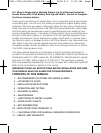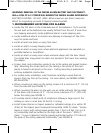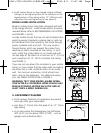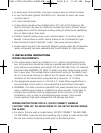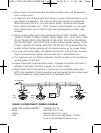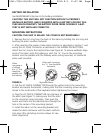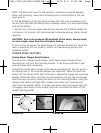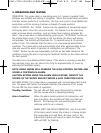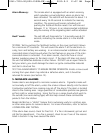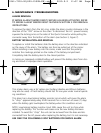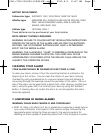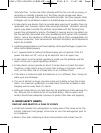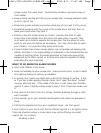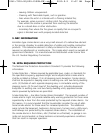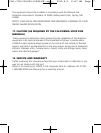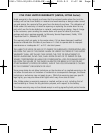Alarm Memory: This smoke alarm is equipped with an alarm memory,
which provides a visual indication when an alarm has
been activated. The red LED will illuminate for about 1.5
seconds every 16-20 seconds to indicate the memory
condition. The memory will remain activated until
pushing the Test/Hush Button resets it or will time-out
between 11 to 13 hours. In an interconnected installation
only the memory of the originating alarm will be activated.
Hush
®
mode: The red LED will illuminate for 1.5 seconds every 8-10
seconds, indicating the smoke alarm is in the Hush®
mode.
TESTING: Test by pushing the Test/Hush button on the cover and hold it down
for a minimum of 5 seconds. This will sound the alarm if all the electronic cir-
cuitry, horn and battery are working. In an interconnected installation all inter-
connected alarms should sound when the test feature on any one of the inter-
connected alarms is activated. If no alarm sounds, check the fuse or circuit
breaker supplying power to the alarm circuit. If the alarm still does not sound,
the unit has defective batteries or other failure. DO NOT use an open flame to
test your alarm, you could damage the alarm or ignite combustible materials
and start a structure fire.
TEST THE ALARM WEEKLY TO ENSURE PROPER OPERATION. Erratic or low sound
coming from your alarm may indicate a defective alarm, and it should be
returned for service (see Section 12).
5. NUISANCE ALARMS
Smoke alarms are designed to minimize nuisance alarms. Cigarette smoke will
not normally set off the alarm, unless the smoke is blown directly into the alarm.
Combustion particles from cooking may set off the alarm if the alarm is located
close to the cooking area. Large quantities of combustible particles are generat-
ed from spills or when broiling. Using the fan on a range hood which vents to
the outside (non-recirculating type) will also help remove these combustible
products from the kitchen.
Model i4618A has a “HUSH” feature that is extremely useful in a kitchen area
or other areas prone to nuisance alarms. For more information, refer to Section
4 OPERATION AND TESTING.
If the alarm does sound, check for fires first. If a fire is discovered, get out and
call the fire department. If no fire is present, check to see if one of the reasons
listed in Section 2 may have caused the alarm.
1261-7203-00(820-1552B-EN).qxd:_ 2010.9.2 11:57 AM Page 11



